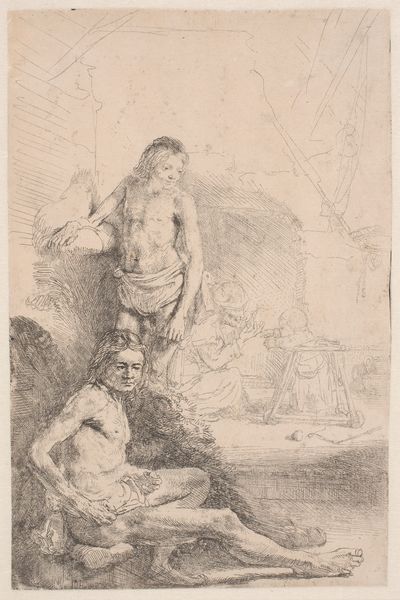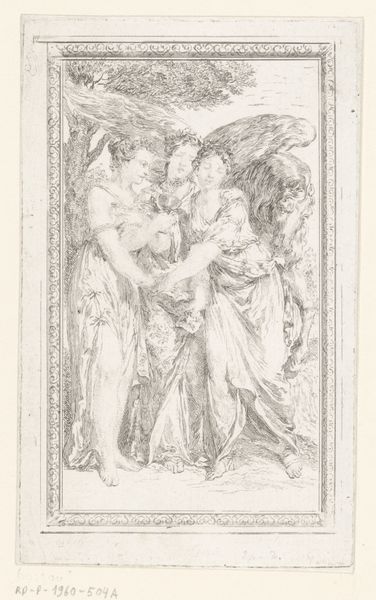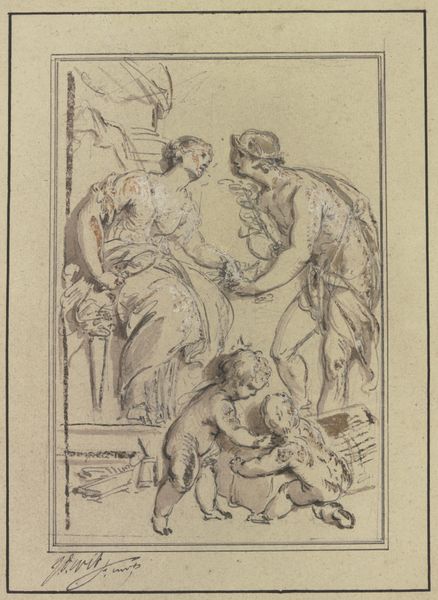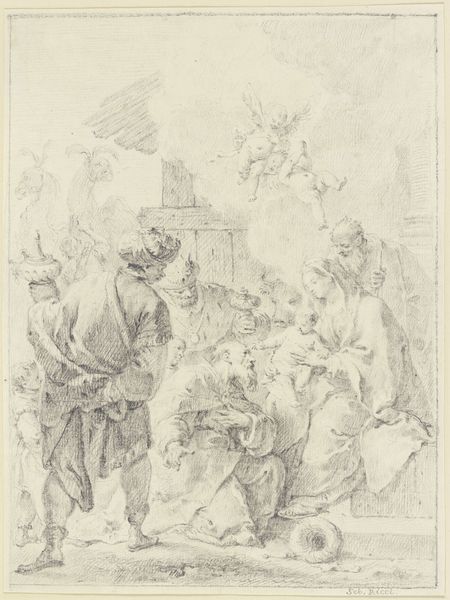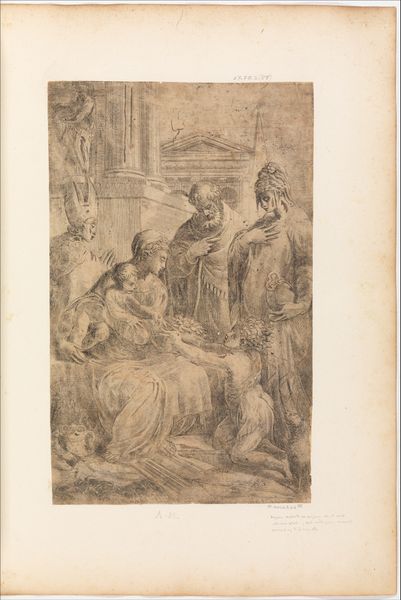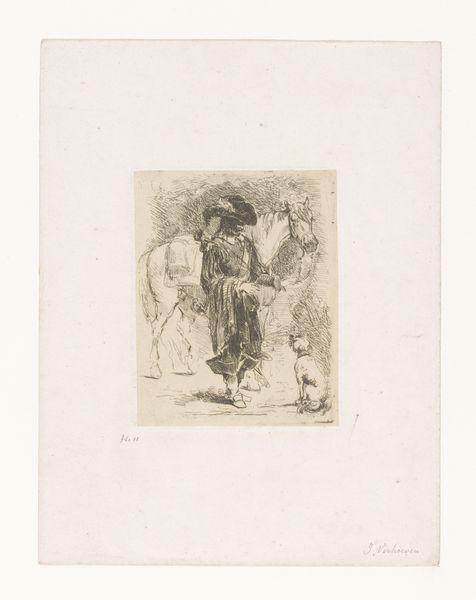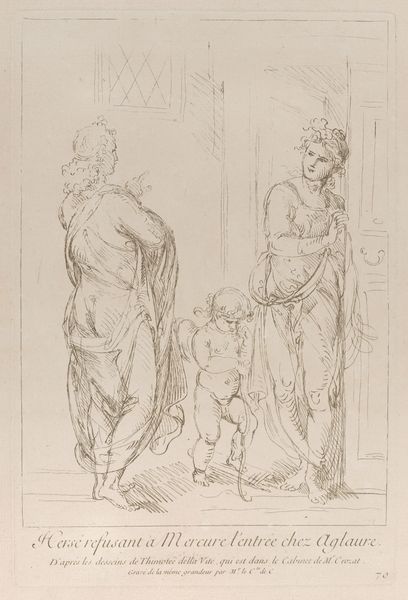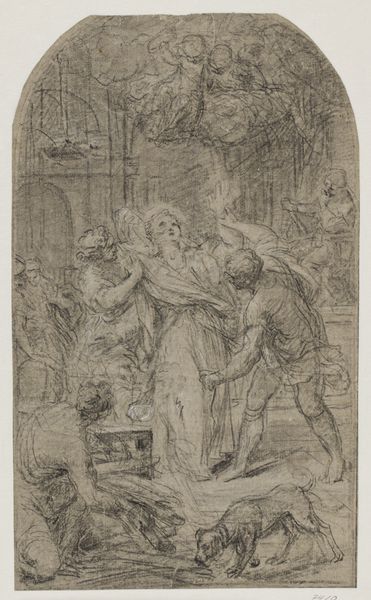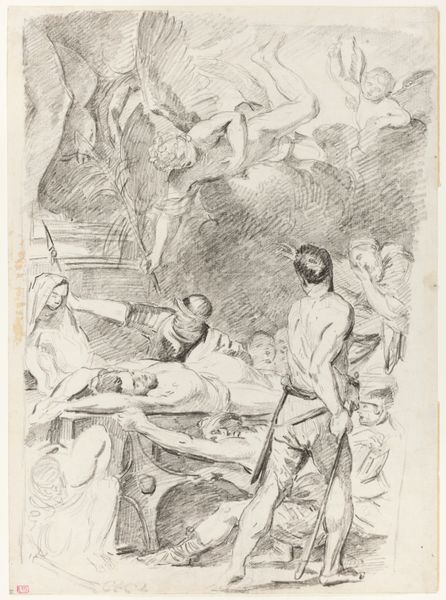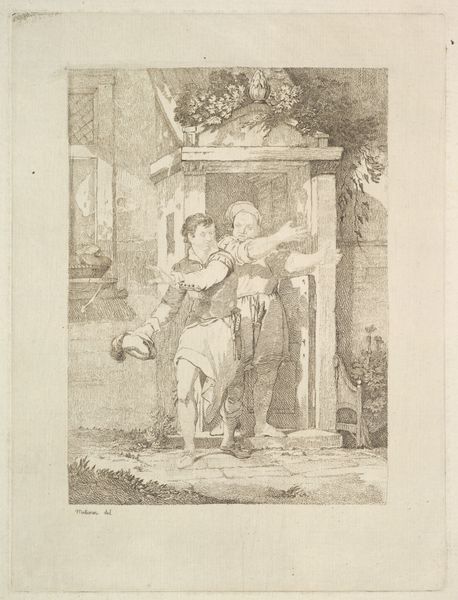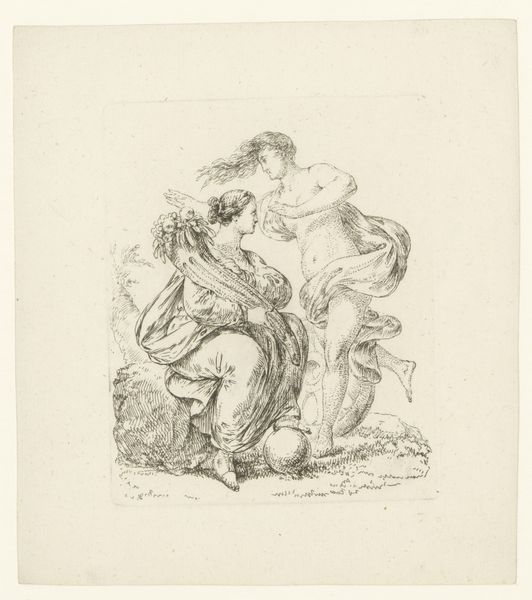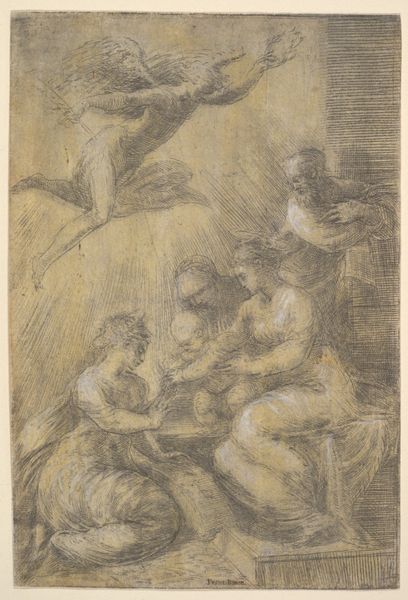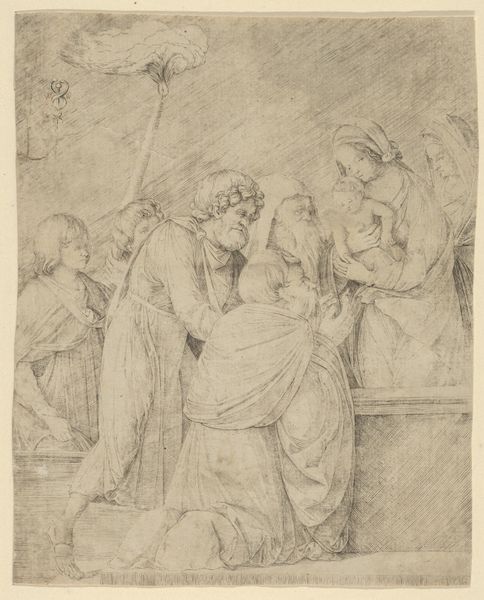
print, engraving
#
baroque
# print
#
figuration
#
line
#
history-painting
#
italian-renaissance
#
engraving
Dimensions: width 181 mm, height 134 mm
Copyright: Rijks Museum: Open Domain
Carlo Saraceni made this print, The Beheading of Saint John the Baptist, using etching, a printmaking technique. The image is created by incising lines into a metal plate with acid, then inking and pressing the plate onto paper. What makes this image so powerful is how Saraceni uses the etched line to convey a scene of brutal violence. Look at how the etched lines define the figures and create a sense of depth. See how the subtle gradations of tone, achieved through the density and layering of lines, lend the image a dramatic chiaroscuro effect. The technique of etching allowed Saraceni to produce multiple copies of this image, making it accessible to a wider audience. This reproductive capacity connects the work to broader issues of labor and consumption. Each print required skill and time to produce, yet the etching process enabled a form of mass production, aligning it with early capitalist modes of distribution. Understanding Saraceni's Beheading of Saint John the Baptist through its materials and making processes enriches our appreciation of its artistic and cultural significance, bridging the gap between fine art and the skilled crafts involved in its creation.
Comments
No comments
Be the first to comment and join the conversation on the ultimate creative platform.
